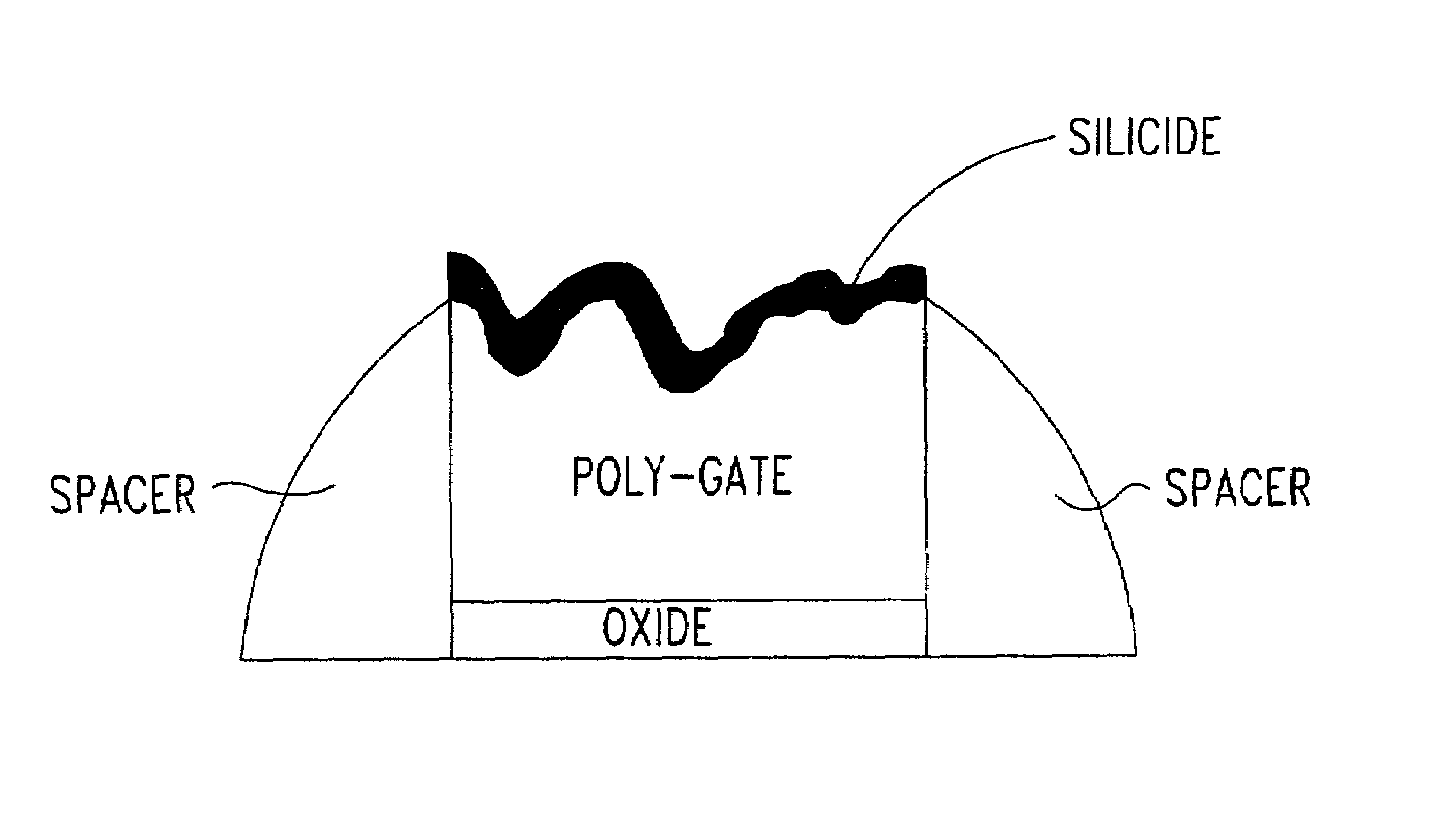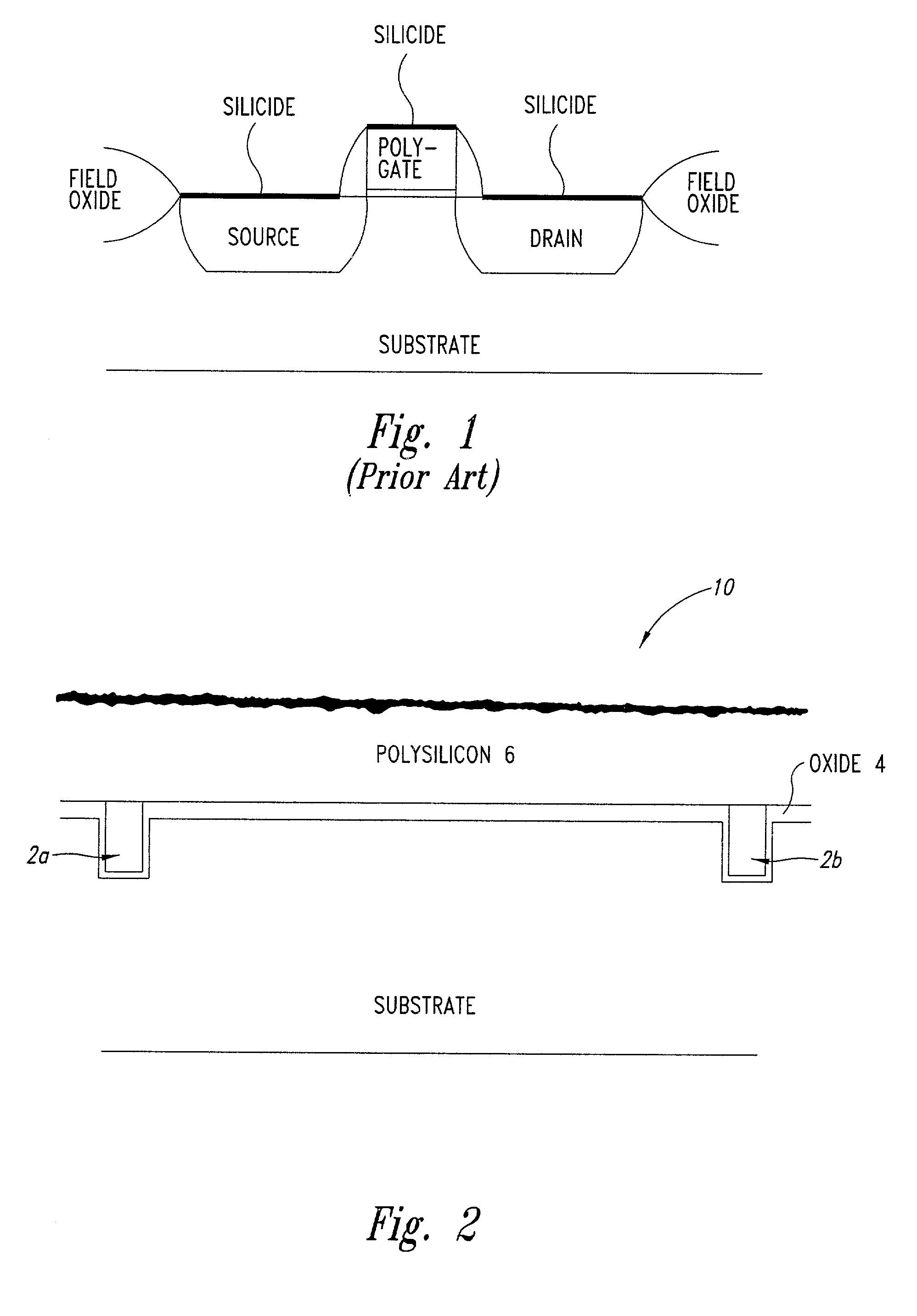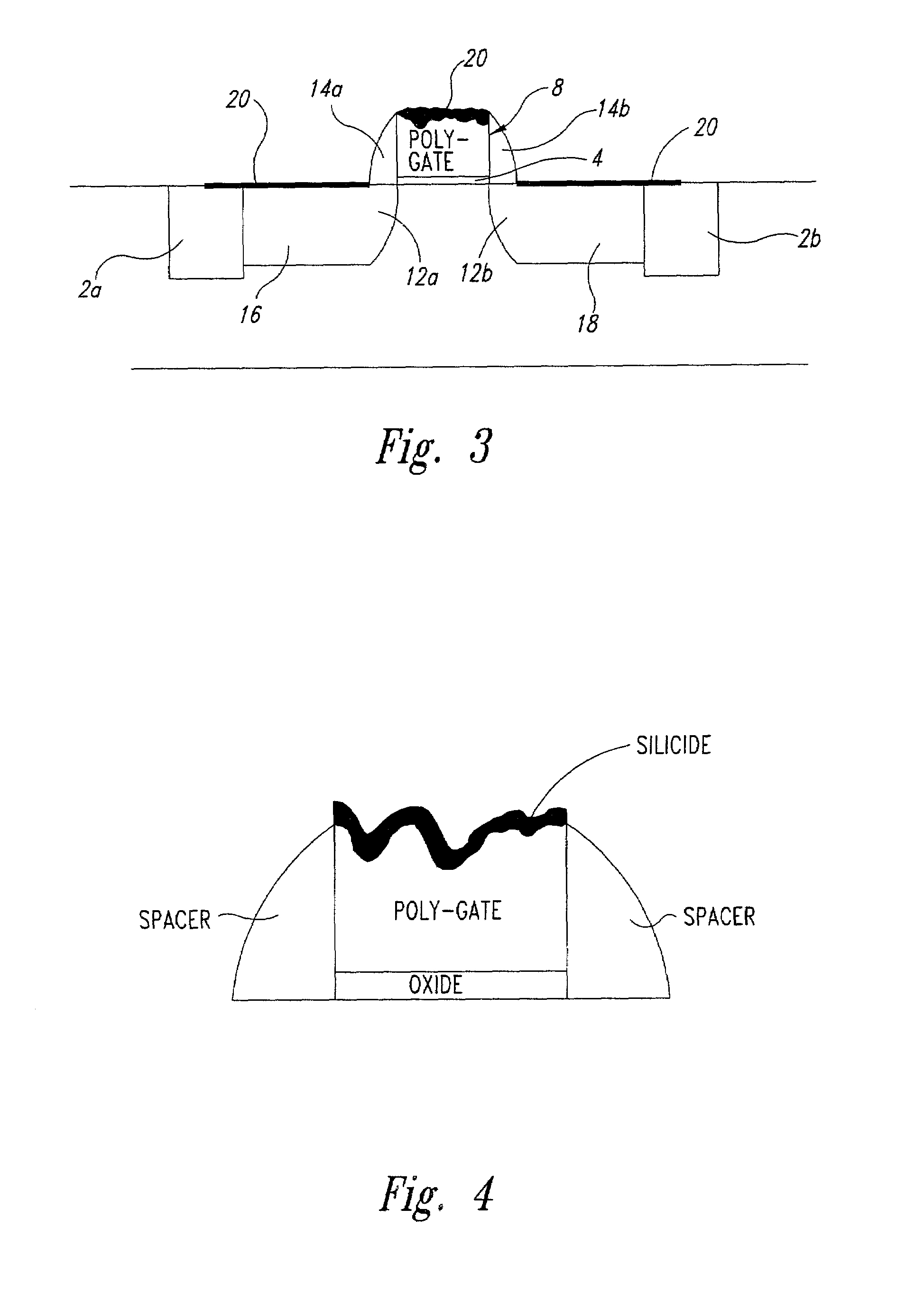Formation of micro rough polysurface for low sheet resistant salicided sub-quarter micron polylines
- Summary
- Abstract
- Description
- Claims
- Application Information
AI Technical Summary
Benefits of technology
Problems solved by technology
Method used
Image
Examples
Embodiment Construction
[0014]Referring to FIG. 2, an electrical isolation step is first performed on a semiconductor wafer 1 to isolate a device 10 from other devices of an integrated circuit. The isolation step may be accomplished by any suitable technology, such as the shallow trench isolation (STI), etch and back fill trench, or the LOCOS technology, trench being preferred over LOCOS. Isolation regions 2a and 2b are thus formed as shown in FIG. 2. After that, a gate oxide film 4 and then a polysilicon layer 6 are subsequently formed on the substrate. The polysilicon layer may be deposited by any suitable conventional technology, such as CVD or LPCVD. Typically, the polysilicon layer has a thickness of about 2000 Å–3000 Å, i.e., about 0.2 μm–0.3 μm.
[0015]After the polysilicon layer 6 is formed, a step for forming a micro-rough top surface of the polysilicon layer is carried out. The formation of a micro-rough top surface of the polysilicon layer 6 is accomplished by creating intentional scratches produc...
PUM
 Login to View More
Login to View More Abstract
Description
Claims
Application Information
 Login to View More
Login to View More - R&D
- Intellectual Property
- Life Sciences
- Materials
- Tech Scout
- Unparalleled Data Quality
- Higher Quality Content
- 60% Fewer Hallucinations
Browse by: Latest US Patents, China's latest patents, Technical Efficacy Thesaurus, Application Domain, Technology Topic, Popular Technical Reports.
© 2025 PatSnap. All rights reserved.Legal|Privacy policy|Modern Slavery Act Transparency Statement|Sitemap|About US| Contact US: help@patsnap.com



